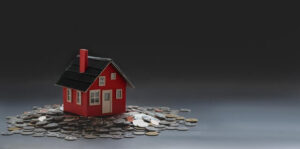Every single drain and pipe in your home leads to one place: the main sewer line to your home. This critical drain line allows all the water—and all the other stuff you put down the drain—to flow out of your home and into the sewer. Main sewer line repair and replacement are some of the very last things you ever want to experience. And that begs the question. Is there a way to avoid such a fate? Over time, pipes can break down and rupture, and the main sewer pipe is no exception. However, knowing some of the top causes of main line damage can certainly help! To give you a chance to prevent this from happening to you, here are the top four reasons you could end up needing to repair or replace your main sewer line. Flushing Un-flushable Debris Some items, like toilet paper, are perfectly fine to flush down the toilet. Others, not so much. Many people use their toilets to get rid of some truly bizarre things. Sometimes, someone’s toddler shoves a bunch of Barbies down there just to see what happens. If enough un-flushable objects make it all the way to the main line, they … Continue reading Top 4 Reasons You Need a Sewer Line Repair or Replacement

5 Plumbing Projects and Upgrades That Could Increase Your Home’s Value
Plumbing projects can be overwhelming, but maintaining, and even improving, your home’s plumbing system can raise its value. The last thing any homeowner (or rental property owner) wants to happen is for their home to lose value. Fortunately, you can help your home avoid depreciation, and perhaps even see its value rise by making some plumbing upgrades. Drain, Pipe, and fixture Inspection and Repair The first plumbing projects you need to take on to protect your home’s value is to ensure that your drains, pipes, and fixtures are in good condition by having a professional plumber inspect them. After you are sure nothing needs to be repaired, you can then focus on increasing the convenience, efficiency, and healthiness of your home’s plumbing system. New Appliances and Fixtures Appliances and fixtures—like bathtubs, sinks, dishwashers, and toilets—are an excellent place to start improving your home. Not only do these everyday items increase your home’s attractiveness, but also, they improve efficiency and conserve water when you replace old models with new ones. A Tankless Water Heater We’ve all been the last one to use the shower in the morning. Is there anything worse than getting all lathered up only for the hot water … Continue reading 5 Plumbing Projects and Upgrades That Could Increase Your Home’s Value

What Is a Plumbing Emergency? 4 Examples that You Never Want to Experience
In an emergency, you want to know that you can rely on your plumber to get the job done. A good plumber knows what to do—and how to do it fast—during a plumbing emergency. What is a plumbing emergency? Keep reading to learn when you should call a plumbing expert ASAP. As the name suggests, a plumbing emergency is an incident during which the plumbing in your home or business malfunctions, often causing serious damage, or at least having the potential to cause it. It does not take long for a little bit of water to do a lot of damage to a building’s flooring, walls, ceilings, and even foundation. A plumbing emergency usually has a few distinct characteristics: Water is leaking from an undefined source. Water is coming from a visible source but can’t be stopped without professional help. The leaking water has caused or has the potential to cause extensive damage. Hazardous waste or materials are present. Your basement doesn’t need to be flooded to warrant a call to an emergency plumber. What is a plumbing emergency? These four examples answer this critical question. Leaking or Burst Pipes Leaky pipes are one of the most common examples of … Continue reading What Is a Plumbing Emergency? 4 Examples that You Never Want to Experience

How to Test Water Pressure in Your House: Everything You Need to Get Started
When was the last time you tested your home’s water pressure? Never? If you have given little to no thought to learning how to test water pressure in your house, you might want to reconsider. Here is what you need to know. Too much water pressure and you could damage your plumbing. Too little and you can’t take a comfortable shower. In some cases, you may not even realize that your pressure is not what it should be, but that problem is easily fixable with a few simple steps. If you have ever wondered how to test water pressure in your house, these tips are for you. The Shower/Toilet Test Have you ever noticed how the water pressure changes while you are showering when someone else flushes a toilet? If you have, you might want to take a closer look. Turn on your shower and watch what happens when you flush the toilet. Does the pressure drop significantly while the toilet is refilling? If so, it might be time to call a plumber to diagnose the problem. Buy a Pressure Gauge If you do not notice anything when you try the shower/toilet test but you still suspect you have a … Continue reading How to Test Water Pressure in Your House: Everything You Need to Get Started

How to Improve Water Quality in Your Home in 4 Painless Steps (No More Bad-Tasting Water)
Looking for ideas on how to improve water quality in your home? These four steps might help. Good, clean water is essential. Without it, we would not be able to survive. In this country, we often assume that everyone has access to clean water, but that is not always the case. In fact, even if your water is technically safe to use, it is possible that its quality is nowhere near what it could be. When your water contains minerals or bacteria that make it taste and smell foul, you are less likely to stay hydrated, which could affect your health, to say nothing of what it can do to your skin and clothes. But you don’t have to settle for low-quality water. Follow these four steps to improve your home’s water. Get Your Water Tested To know what you must do to improve the quality of your water, you first need to know what is wrong with it. In other words, you need to get your water tested. It’s not as difficult to test your water as you might think—all you have to do is get a home testing kit. Using one of these kits, you can determine what … Continue reading How to Improve Water Quality in Your Home in 4 Painless Steps (No More Bad-Tasting Water)

